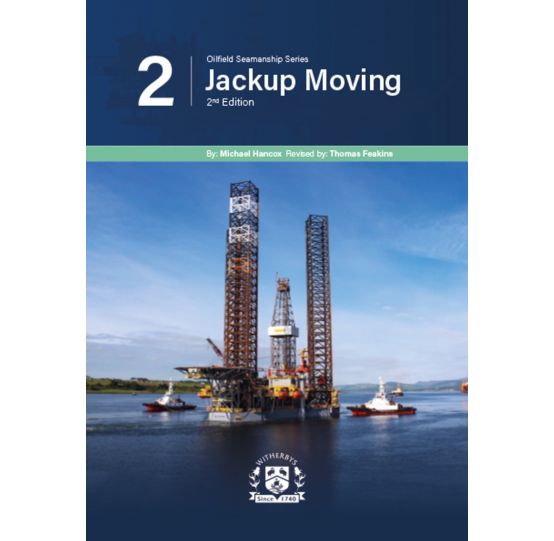Jack-Up Moving, Vol 2 ( OS / JM )
S$190.14
January 2023
This volume of the Oilfield Seamanship Series illustrates how jackup rigs are safely moved from one location to another in an offshore environment. The purpose of the book is to support tow Masters, personnel responsible for moving jackup rigs, tug and anchoring handling vessel crews, and those ashore involved in planning rig move operations.
In stock
This second edition reflects significant changes to the ways in which jackups are managed when afloat, such as those concerning design rules, regulations, guidelines and codes of practice. It includes changes to jackup moving operations, which are now conducted under a detailed and agreed Rig Move Procedure (RMP). This document clearly sets out the duties and responsibilities of the principal parties involved, the criteria to be used when making decisions regarding starting and stopping operations and the details of any sea passage to be undertaken. The book is appended with pre-move checklists and verified tow Master calculations.
This edition has been updated to include intricate technical illustrations, which have been annotated to reflect the steps involved in complex positioning operations. Factors such as weather criteria, seabed analysis and Certificate of Approval acquisition have also been included, making this a both a comprehensive and practical reference tool.
This volume of the Oilfield Seamanship Series illustrates how jackup rigs are safely moved from one location to another in an offshore environment. The purpose of the book is to support tow Masters, personnel responsible for moving jackup rigs, tug and anchoring handling vessel crews, and those ashore involved in planning rig move operations.
Tow Masters moving jackup rigs should have relevant experience of working on tugs or as barge engineers. Barge engineers are familiar with jacking gear, preloading requirements, maintenance of jacking equipment and issues associated with rack phase differences (RPDs). Tow Masters with experience on vessels have a good understanding of towing wires and ropes, tow angles, bollard pull (BP) requirements and weather criteria. The subjects covered in this publication will complement the existing knowledge of tow Masters who want to expand their understanding of particular jacking or vessel operations.
Jackup rig crews are familiar with their own operations, ie drilling, but if not experienced in moving rigs, they must be well briefed in afloat operations by the tow Master on board. This ensures that all personnel are aware of the risks associated with the marine environment and potential poor weather.
In 2022 there are over 500 jackup rigs in worldwide operation, compared to 205 semi-submersibles1. Despite advances in technology such as remote RPD measurements, more stringent Class build requirements and warranty requirements on towing, there continue to be incidents where jackup rigs are damaged, or indeed lost, such as the ‘Naga 7’ in 2021. A better understanding of the operational aspects of jackup rig moving will assist in all parties’ appreciation of potential hazards when moving from one location to the next, and what can be done to safely mitigate those hazards.
The work contained within this publication was carried out with the assistance of the original author Captain Michael Hancox and Captains Hans Villadsen, Rob Breure and Josh Develing.
Thomas Feakins, 2022


